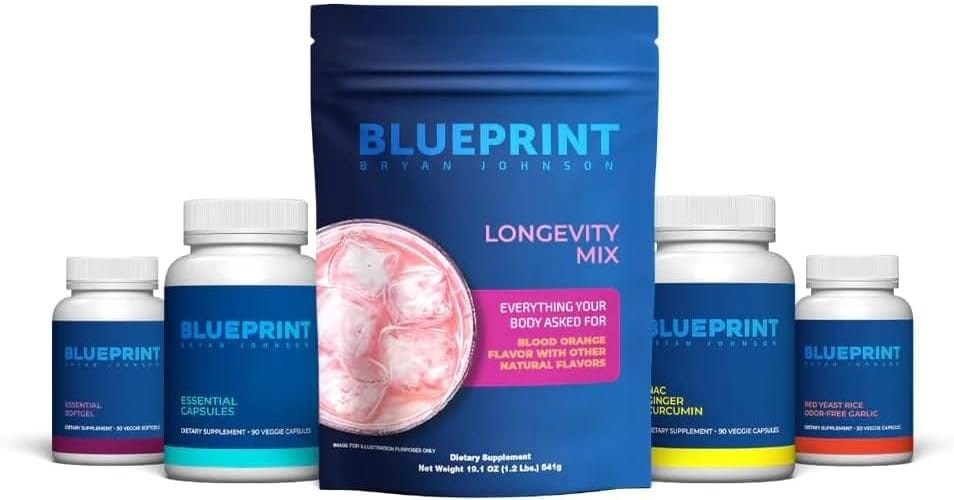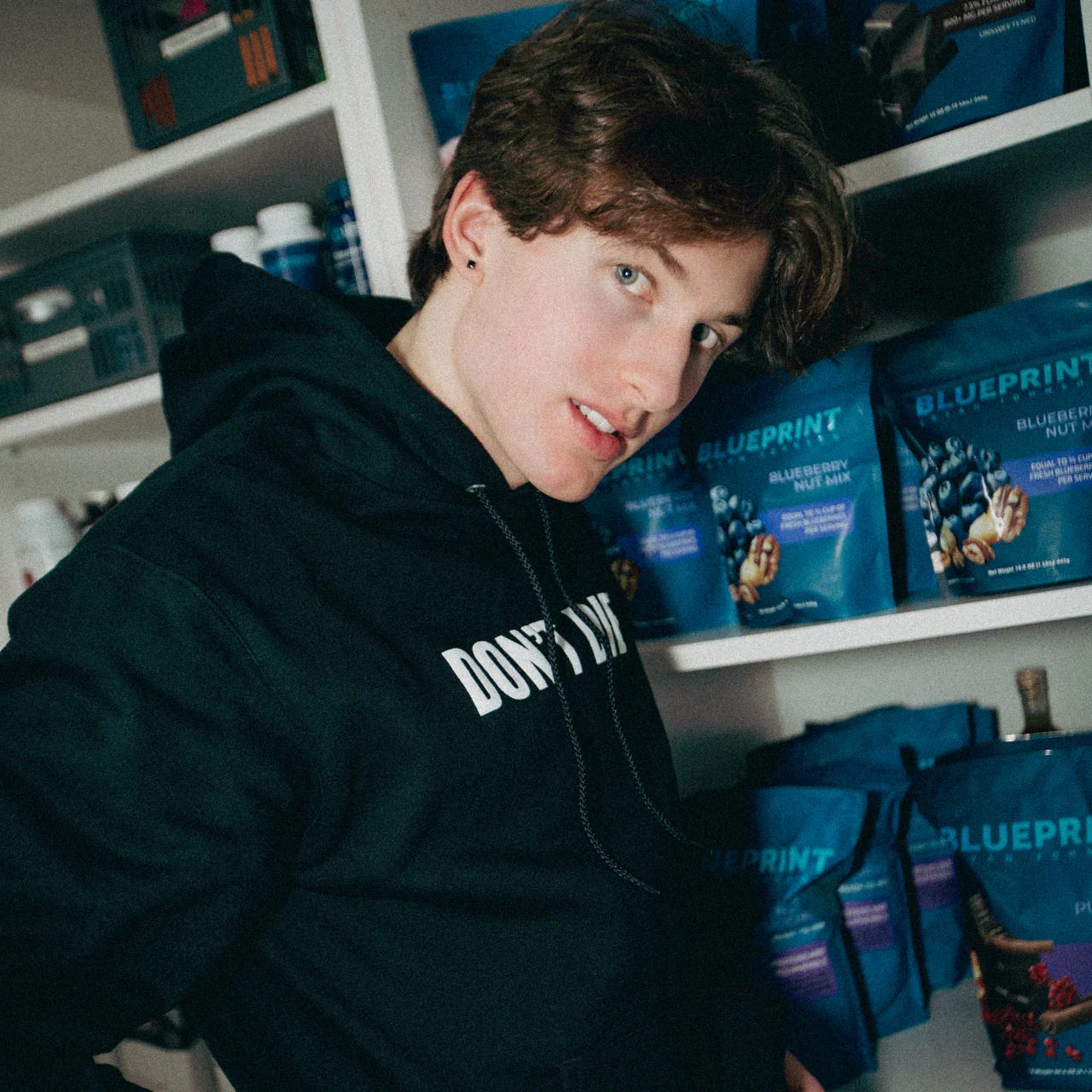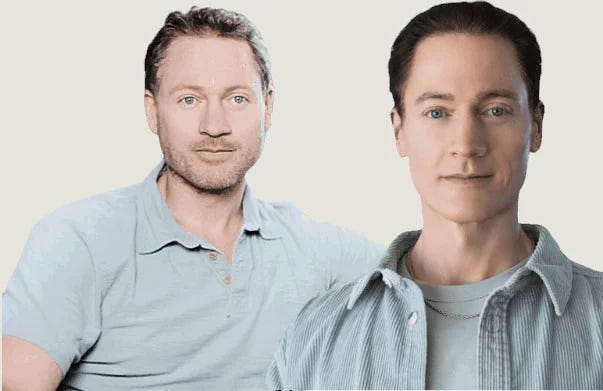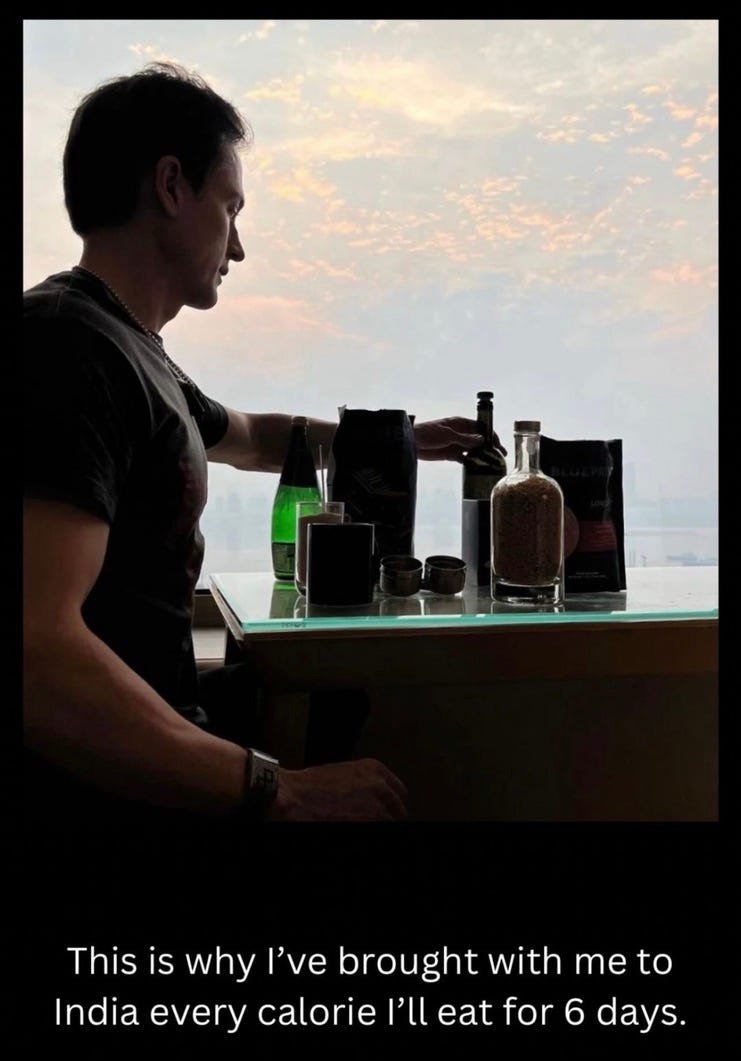Don’t Die is a movement-initiative-community started by Bryan Johnson, the serial entrepreneur and VC best known in his previous life for founding Braintree, a mobile payments company that acquired Venmo, which he sold to eBay in 2013. Following the exit, Johnson shifted his focus towards human health and longevity through a new venture, Kernel (an outfit that intends to develop advanced brain-computer interface technology) and launched OS Fund in 2014, which invests in early-stage science and technology companies that aim to radically improve quality of life.

But what made Johnson famous to the masses is Project Blueprint, a comprehensive anti-aging and health optimization program, initiated around 2021. The project employs a team of over 30 medical professionals and aims to reverse Johnson’s biological age and enhance his physical and cognitive performance. His regimen includes extensive daily monitoring and a range of interventions, from diet and exercise to experimental therapies. It has since been compiled into a periodically updated freely available health and longevity regimen, named the Blueprint Protocol. At this point it’s unlikely you wouldn’t have encountered one of the numerous “This CEO Spends 2 Million Dollars a Year to Live Forever” articles published about him and Project Blueprint.
What’s ultimately at stake for him – and Don’t Die – is hitting escape velocity in reversing biological aging so that yet-to-be-discovered therapies and interventions, brought upon by the advent of AI, will be able to prolong life indefinitely.
Since the inception of Project Blueprint, BJ has been very active on social media, anointing himself as one of the world’s leading health influencers (he’s good on Twitter). With ambitions arguably well beyond the average supplement grifter, he’s nevertheless followed the standard health-influencer-to-supplement-entrepreneur pipeline. In 2023 he launched Blueprint the supplement brand, packaging the essential chemical components of his protocol into a relatively accessibly-priced supplement stack. The launch of his supplement brand was telegraphed in advance through a tactical FUD campaign aimed at his to-be competitor AG1 (which, to be fair, is a borderline scam). The Blueprint offering has since been expanded to include extra virgin olive oil (branded Snake Oil as an act of self-awareness) and other protocol essentials beyond mere supplements.
Don’t Die was launched in 2023. The specific nature of Don’t Die is somewhat ambiguous (an app, podcast and events are coming), but broadly speaking it’s a movement or community – a “philosophy” – for people who are obsessed with deferring death using science and technology. In fact, it has all of the essential building blocks of a neo-religion, but more about that later.
So, to recap the universe of Bryan Johnson’s overlapping brands, there’s:
Bryan Johnson, the founder / test subject / influencer himself
Blueprint Protocol, the open-source longevity protocol
Blueprint, the supplement brand
Don’t Die, the movement
Longevity Industrial Complex
Of course the rise of Bryan Johson and the appeal of his offerings isn’t happening in a vacuum. The relative importance of youth and youth culture (itself a product of post-war demographics) to marketers is in decline. Young people today have less to spend, and there are simply fewer of them to buy whatever it is you’re selling. At the same time, youth culture is losing its appeal to older generations; culture isn’t trickling up the age pyramid like it used to. Older people want the health that comes with youth, but not the skibidi.
Boomers have the most to spend, but their remaining Customer Lifetime Value is limited. This is a developing Nemesis hypothesis, but in our view it is millennials – in particular older ones – and their consumption preferences that are the leading generational locus of influence. This is particularly true for “advanced consumers” in higher income brackets who would rather continue life within their demographic coding and preferences rather than fomo into “what’s next”.
As older millennials are confronting the first effects of aging, it’s not surprising to see a surge of interest in health and longevity – more often than not serviced by select health influencers in various forms of infotainment (Huberman, Peter Attia, Bryan Johnson etc.).
The emerging Longevity Industrial Complex is distinct from 2010s Goop / woo wellness in its focus on tracking, metrics, testing and evidence-based science. The status symbols it produces have a larger proof-of-work component to them than the more limited proof-of-purchase signaling value of wellness products and services. Having top 1% biomarkers, high VO2 max, perfect sleep score etc. necessitate a significant investment of time and effort – in addition to associated purchases.
Strava, the sports tracking social network, productizes these status games. Incentives ruling everything, we’re already seeing Strava-spoofing by those who in fact aren’t quite as time rich as they like to appear.
For the time being more niche and harder to spoof is a spot on the Rejuvenation Olympics leaderboard (founded by BJ and Dr. Oliver Zolman), that tracks participants’ “rate of aging” via a number of biomarkers analyzed by select verified clinics. Bryan Johnson himself lands in the top 10, but until now top ranks have also been scored by participants with significantly more accessible personal protocols, and presumably better genetics (e.g. see the podcast circuit of people like Siim Land, David Pascoe and Julie Gibson Clark).
We’d be surprised if this remains the case. While the professional managerial classes battle it out on Strava, considering the potentially extreme signaling value of the RO leaderboard (you’re literally doing everything you can to defy death), we expect for it to become a battlefield of celebrities and (anonymous) UNHWIs over the coming years.
The Brands
Bryan Johnson is interesting. While probably considered average looking during his Braintree / Venmo era, he’s now hot in a peculiar asexual vampyric way, rubbing shoulders with the Kardashians. One could imagine his 34 step morning routine Youtube videos staged in his antiseptic minimalist LA house to come across as episodes of California Psycho, yet his somewhat silly, asexual energy and child-like enthusiasm for his cause make him in fact quite endearing.
It’s tempting to lump Bryan Johnson into the broader category of male lifestyle influencers, but there’s something about his style and version of perfection that sets him apart from the alpha male cohort. While the daddies are sporting facial hair and wearing suits, Johnson is more of a twink – often stripped naked and hairless to flaunt his reclaimed youth (although with a recently reclaimed full head of hair). This sex appeal is less about being an imposing beefcake and more about being a lean sinuous piece of ass. If Huberman is a Green Beret in a button up, then Johnson is a deer in a crop top.
The longevity KOLs of yesteryear (e.g. Aubrey De Grey, Ray Kurzweil, David Sinclair) put most of their emphasis on to-be-yet-proven medical interventions, caloric restriction, extreme supplement protocols and, in the case of the latter, dubious science. Dave Asprey, The Bulletproof Executive looked actually tired. The lifestyle they lead or advocated for didn’t seem particularly appealing or sexy.
Bryan Johnson’s life as the “most measured person in the world” and ”rejuvenation athlete” is in many ways more extreme, but he seems to be genuinely enjoying living it. 90% of his protocol is actually sound evidence-based advice on sleep, nutrition and exercise – just taken beyond what are considered normal standards. But it’s the no-holds-barred quest for marginal gains from experimental therapies for the remaining 10% as well his no-compromises adherence to the protocol that provides most of the entertainment value.
Recently he visited India together with his son Talmage as guests of the Ambani family at their home, which also happens to be the most expensive private residence in the world. In an Instagram story, watching over smog-covered Mumbai, seated next to an air purifier he exhibited all the calories he will consume on his trip which he had brought with him (all Blueprint™ naturally).
Of course, this is basically a glimpse of Elysium, and the panacea BJ and Blueprint offers aren’t accessible, or even scalable to the masses. Nor do they offer any redeeming hope to the millions subsisting in the smog below. Not-dying remains an immense privilege. But making this obvious critique isn’t the point of this report. Here, we’re more interested in the brand(s) he is building. Who is this for?
Competing protocols associated with individual health and longevity influencers all have an idea of the good life built into them; the thing you’re optimizing for. Do you want to be “harder to kill” (Dave Goggins), ready to “compete in the Centenarian Olympics” (Peter Attia) or are you truly ready to “not die” (BJ)?
In its quest for the ultimate prize, BJ / Blueprint / DD makes an obvious tradeoff between the raw high T vitality of the Liverkings of the world and the necessary risk mitigation that comes with trying to optimize for a full spectrum of top of class biomarkers. There’s a type of person that chooses the former and there’s a type of person who is only willing to leave the house on a sunny day in mineral sunscreen, white gloves, and a parasol.
But there are levels to BJ’s brand stack, just as there are levels to its consumers. Yes, food systems are broken; the health habits of the median inhabitant of the industrial world are terrible. Sure, the general health advice of BJ is sound, and if you’re willing to take the extra step Blueprint is indeed a fairly reasonably priced comprehensive supplement and nutrition stack. For now, it’s functionally a value brand.
Don’t Die on the other hand has all the trappings of a neo-religion or cult: a charismatic leader, an eschatology and belief system:
We are at war with death and its causes.
We are building towards an infinite horizon.
We are fighting for the freedom to exist as long as one chooses.
Why? Because we have things to do tomorrow. And tomorrow’s tomorrow. Until we no longer want tomorrow.
(Don’t Die manifesto)
While not antinatalist in itself (Bryan Johnson like most UHNWIs has several children), it offers a sense of purpose and intergenerational time to a generation that’s increasingly childless. It’s the ultimate existential lifesaver for DINKs. By means of the Rejuvenation Olympics and other ways of measuring adherence to the cause, it has a built-in caste system that offers advancement both with money (time, advanced therapies) and meritocracy (see budget Rejuvenation Olympians mentioned earlier). These are great mechanics for a high stakes status game.
As the center of mass of cultural influence moves from fashion t
o health (see our previous brand analysis of Balenciaga), cultural, social and financial capital follows. While still small, out of all the brands competing for market- and mindshare in the space, BJ / DD / Blueprint captures this attention rotation in the purest way. In the aforementioned report, we said Bryan Johnson could be a potential heir to post-peak Balenciaga as culture’s apex predator. What we meant by this term was an entity with such clout mass that its gravitational pull allows it to pull in or associate with whatever celebrity, brand, trend, creative etc. it wants to. You can already see his appeal to select celebrities. As the Overton window dictating what’s considered ‘normal’ shifts in the direction BJ has paved we could see his influence snowballing at an unprecedented scale for a health influencer cum extropian Messiah.
“I only invest in cults,” says the 2024 memecoin investor who sees himself as a present day Soros. Indeed, the idea of brands as cults has been so overused in trying to shill garbage to the greater fool that the original quote feels more like a joke now. However, in a strict sense, this is a sound investment thesis. Without making a value judgement in either direction – it’s just business baby – a hypothetical private equity arm would invest in Don’t Die / Blueprint (NFA DYOR).
In Conclusion
In the 1970s Richard Hell made a t-shirt that said PLEASE KILL ME. He was too afraid to wear it around New York City at the time, worried that someone might actually kill him. In a famous performance his bandmate Richard Lloyd wore the shirt and the slogan became a generational statement.
PLEASE KILL ME summed up the punk spirit of the seventies. To be young was to tempt fate, to flirt with death, to court danger. The icons of the era died young.
NO FUTURE was another slogan of the time, derived from the Sex Pistols’ God Save the Queen. BORN TO DIE was another. The death instinct drove youth culture. It was chic to embrace your mortality and to court your demise.
When youth lead culture, the premium on feeling alive is high, but when culture is guided by people entering middle age that energy shifts toward staying alive. In many ways these are two oppositional forces – we celebrate the young people who live every day like it’s their last (cool), and until very recently, we pitied those who lived too conservatively and “missed out” (lame). Now that it seems possible to meaningfully extend your life, there’s a greater potential reward for staying alive that fundamentally alters how we value our youth and the decisions that come with it – who cares if you missed out on your 20s if it means you get to live another 50 years?
It’s probably inaccurate to say that Don’t Die challenges mortality itself, but it seems completely fair to say that it challenges our natural timeline. Maybe Johnson’s movement is just an evolution in delayed gratification, but it could also be a real turning point in human history. Everyone loves the story of a 100 year old woman who ate bacon, drank vodka and smoked cigarettes every day until her last, but if longevity can be condensed into a protocol, how many people would be willing to follow the rules in order to live forever?
How much are you willing to pay for it?















I currently pay ~$600 and invest 40 hours /month for it -- though its really just the cost of a change in mindset.